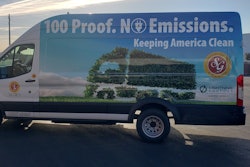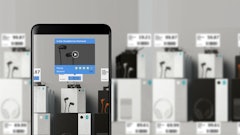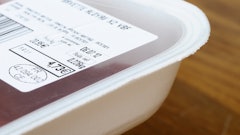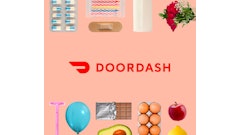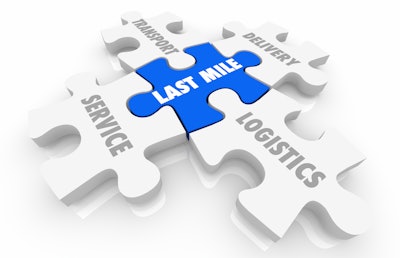
Even before the pandemic upended every corner of the food supply chain, last-mile optimization for grocery delivery was poised to become a major focus for supply chain technology providers. In June 2020, online grocery sales hit $7.2 billion, helping to usher in the “grocery delivery wars,” which have been raging for months in spite of the “broken economics” of fulfilling end customers’ grocery orders.
All B2C last-mile fulfillment use cases face overlapping challenges. Yes, grocery delivery optimization requires businesses to get into the weeds of micro fulfillment and deal with fragile and perishable items, but these concerns come alongside more obvious last-mile delivery needs -- delivery routes that are efficient and adaptable, clear visibility into deliveries as they unfold and open communication between dispatchers, drivers and customers (a carton of ice cream might not require a service technician for installation, but the consumer certainly doesn’t want it to sit on their porch unnoticed for hours).
Meanwhile, the wholesalers and distributors who service those grocery stores in the first place do have unique last-mile challenges. And, when the conversation is dominated by the B2C question, those challenges often get ignored or papered over.
Challenges in wholesale food and beverage logistics
Let’s say you operate a beverage distribution business. You sell cases of beer or wine to some on-premise businesses (like bars and restaurants) and to groceries and corner stores. Of course, you need to dispatch drivers in a way that minimizes travel time between stops and maximizes the total capacity of delivery routes. In other words, you need some modicum of last-mile optimization. But, unlike the optimization passes that might happen in grocery delivery, you can’t dictate times to customers; you need to deliver to them when they’re actually open and receiving—times that might be radically different for bars vs. grocery stores, different on different days or significantly impacted by the pandemic. If you show up at a restaurant before they’re open—or during their lunch rush—the result may be a costly failed delivery.
Even if the business is more interested in optimizing client engagement than hitting the absolute maximum number of stops per day, you still need significant visibility into the entire last mile simply to calculate cost per stop or cost per delivery. Especially right now, you also need to handle significant volatility -- not only do you have to respond in an agile, cost-effective way for changed order volumes, but you also need to adapt to the changing needs of the businesses themselves (e.g. providing to-go containers for beverages that would have previously been consumed on site).
When the delivery schedule is comprised mostly of recurring orders from your roster of clients, it can be hard to attain this level of adaptability. When the most efficient route puts you in danger of showing up late for a delivery to your biggest account, you have to figure out how to prioritize stops and make tradeoffs. This can result in significant routing and communication challenges that simply don’t apply to grocery deliveries.
Why most last-mile solutions don’t cut it for B2B
Let’s think about all those challenges in terms of the current food logistics technology landscape. A typical grocery delivery platform isn’t likely to offer the ability to easily optimize routes that include multiple recurring stops. It won’t be able to route around the complexities of different businesses opening and closing hours. And, it’s not likely to have built-in features that gain visibility into the entire last mile, coordinate with sales reps or handle cash-on-delivery (COD) transactions.
This is simply an issue with focus on grocery delivery—it’s an issue across last-mile technology. Food and beverage distribution businesses all have unique, specific needs. A cookie-cutter approach to delivery optimization simply won’t cut it. Especially when that cookie cutter doesn’t handle the fundamental challenge of balancing recurring stops and orders with new changes and additions.
How to leverage hybrid routing in food logistics
The food logistics technology industry’s heavy focus on grocery delivery risks leaving out food and beverage wholesalers in a big way. But, by being intentional with how technology is developed, you can avoid a world where B2B delivery use cases and functionality fall completely by the wayside.
What might that look like in practice? Let’s look at route optimization as a telling example.
Most route optimization solutions tout their dynamic routing capabilities as a key component of their value props. For B2C food delivery—including groceries—this is ideal -- you take a swath of customer orders and plug them into the route optimizer and it spits out the fastest, shortest or most cost-effective route from scratch. Every day, every week, a new set of truck routes.
For most, the available alternative to dynamic routing is static routing -- drivers take the same routes on a daily or weekly basis, with dispatchers adding and removing stops (usually by hand) when new customers crop up. Naturally, this offers little chance of optimization. Manually adjusting last-mile routes is time consuming under the best of circumstances and becomes impossible as you add more and more factors and sources of complexity.
But, what if food wholesalers had the chance to utilize a hybrid approach that combined static and dynamic routing? For example, a system in which B2B distribution companies could create optimized static routes—routes that accounted for stores’ and restaurants’ hours of operation, etc.—that could be dynamically adjusted on a daily or weekly basis as needed. Instead of being stuck with a less-than-optimal static route in a volatile marketplace, food and beverage wholesalers would have the stability of static routes for recurring orders plus the ability to route new stops dynamically as needed. This would present the best of both worlds -- top-tier customers get their deliveries in their preferred windows, but new orders and changes aren’t impossible to accommodate. From there, it’s easy to imagine how a distributor or wholesaler could start to meaningfully improve their on-time rates, cost per stop, capacity utilization and much more.
This is just one example. But, it suggests the sort of innovation from which many food logistics businesses could benefit substantially. And yet, if you leave food wholesalers and other B2B operations out of the delivery optimization conversation, innovations like this will remain a low priority to the detriment of food logistics as a whole.
Click here to hear more about solutions in the last-mile:





![Adobe Stock 280800711 [converted]](https://img.foodlogistics.com/files/base/acbm/fl/image/2021/08/AdobeStock_280800711__Converted_.611e898daa123.png?auto=format%2Ccompress&fit=crop&h=167&q=70&rect=0%2C53%2C900%2C507&w=250)
